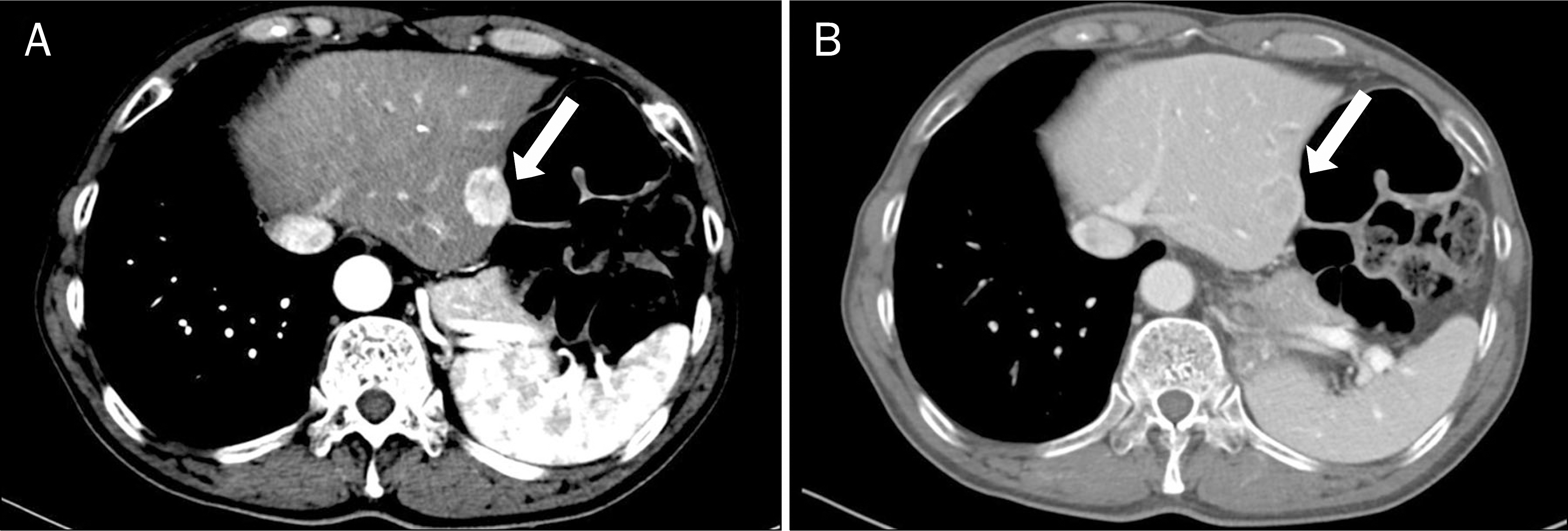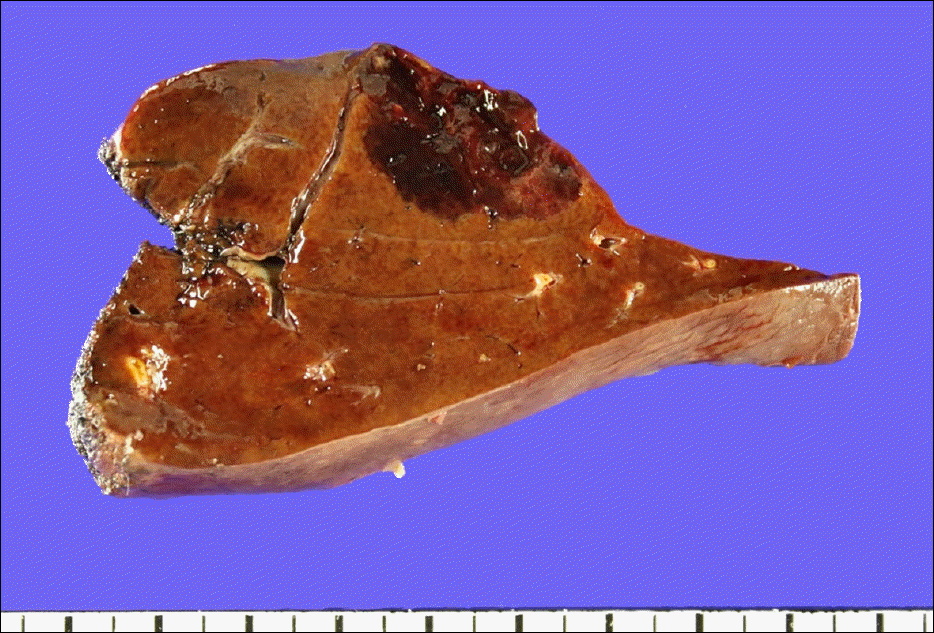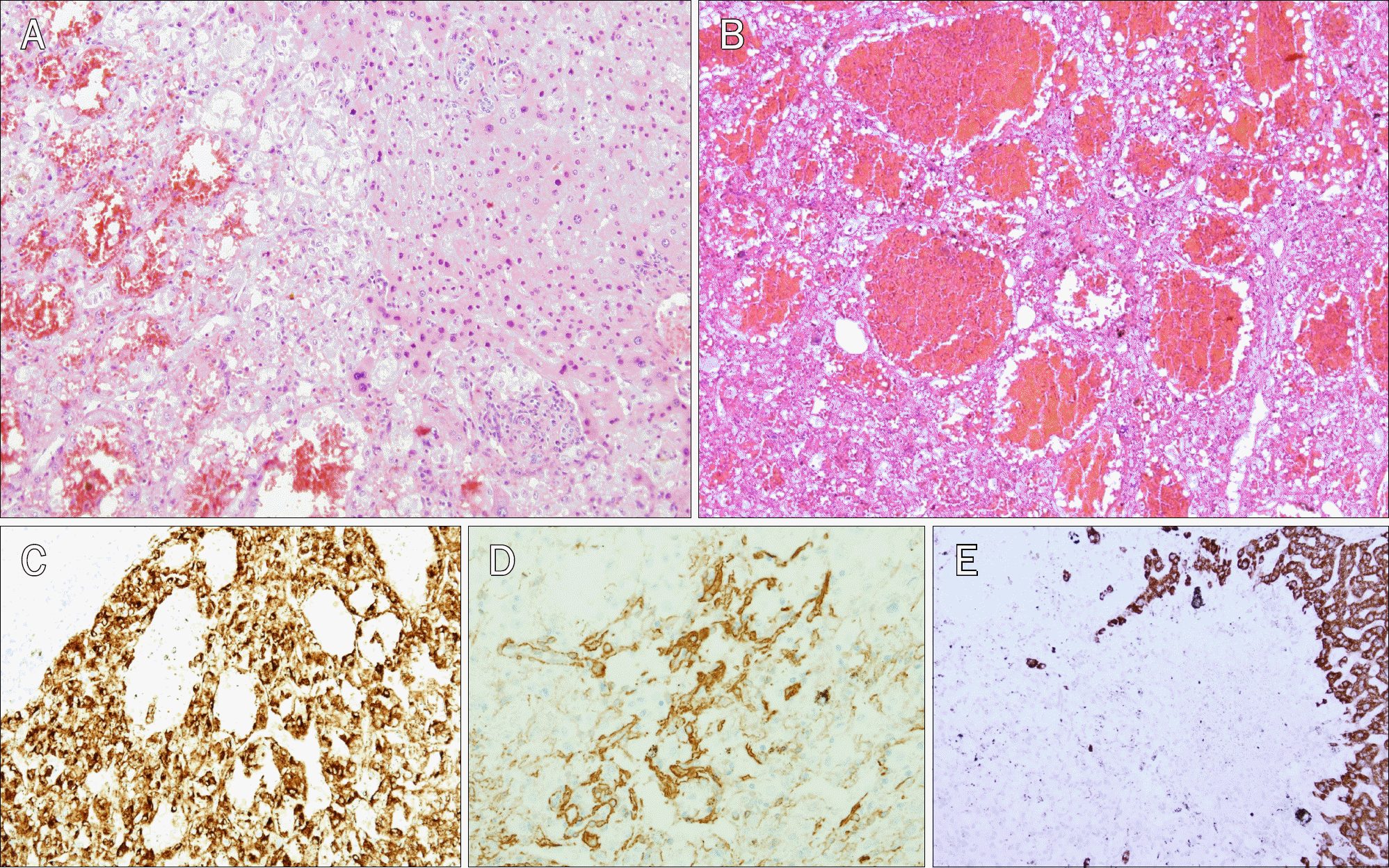References
1. Nonomura A, Mizukami Y, Kadoya M. Angiomyolipoma of the liver: a collective review. J Gastroenterol. 1994; 29:95–105.

2. Luo R, Zhao J, Tan Y, Sujie A, Zeng H, Ji Y. Hepatic angiomyolipoma: a clinicopathologic features and prognosis analysis of 182 cases. Zhonghua Bing Li Xue Za Zhi. 2016; 45:165–169.
3. Yeh CN, Chen MF, Hung CF, Chen TC, Chao TC. Angiomyolipoma of the liver. J Surg Oncol. 2001; 77:195–200.

4. Liu J, Zhang CW, Hong DF, et al. Primary hepatic epithelioid angiomyolipoma: a malignant potential tumor which should be recognized. World J Gastroenterol. 2016; 22:4908–4917.

5. Lee SJ, Kim SY, Kim KW, et al. Hepatic angiomyolipoma versus hepatocellular carcinoma in the noncirrhotic liver on gadoxetic acid-enhanced MRI: a diagnostic challenge. AJR Am J Roentgenol. 2016; 207:562–570.

6. Nonomura A, Mizukami Y, Muraoka K, Yajima M, Oda K. Angiomyolipoma of the liver with pleomorphic histological features. Histopathology. 1994; 24:279–281.

7. Tsui WM, Colombari R, Portmann BC, et al. Hepatic angiomyolipoma: a clinicopathologic study of 30 cases and delineation of unusual morphologic variants. Am J Surg Pathol. 1999; 23:34–48.
8. Cha I, Cartwright D, Guis M, Miller TR, Ferrell LD. Angiomyolipoma of the liver in fine-needle aspiration biopsies: its distinction from hepatocellular carcinoma. Cancer. 1999; 87:25–30.
9. Yang CY, Ho MC, Jeng YM, Hu RH, Wu YM, Lee PH. Management of hepatic angiomyolipoma. J Gastrointest Surg. 2007; 11:452–457.

Go to : 
 | Fig. 1.Liver dynamic CT showed a hypervascular mass (arrows) with a size of 2.5 cm at the second hepatic segment. (A) In the arterial phase, strong contrast enhancement with central low density was observed. (B) In the portal phase, the tumor had almost washed out the contrast agent, but weak contrast enhancement still remained. |
 | Fig. 2.Liver magnetic resonance image reveals a capsulated mass (arrows) with a size of 2.5 cm. The mass shows low signal in the T1-weighted image (A), intermediate signal in the T2-weighted image (B), high enhancement at the arterial phase (C), and iso-signal in the diffusion-weighted image (D). |




 PDF
PDF ePub
ePub Citation
Citation Print
Print




 XML Download
XML Download